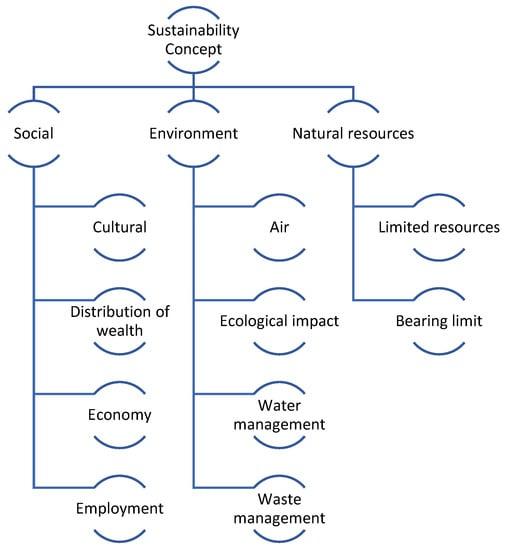Table of Contents
- Understanding the Basics of Domain Flipping and Its Potential Profitability
- Identifying Valuable Domains: Key Metrics and Tools for Success
- Crafting a Winning Sales Strategy: How to Market Your Domain Effectively
- Navigating Legal and Ethical Considerations in Domain Ownership
- Building a Sustainable Domain Portfolio: Tips for Long-Term Success
- Q&A
- To Conclude
Understanding the Basics of Domain Flipping and Its Potential Profitability
Domain flipping is a strategic practice where individuals purchase domain names with the intent to sell them later at a profit. The concept hinges on identifying valuable or trending domain names that can attract potential buyers. Successful flippers leverage research on search trends, brandability, and keywords that resonate with their target market. By selecting domains that stand out and encapsulate a particular niche or business idea, flippers can significantly increase their chances for higher returns.
Understanding the value of a domain is crucial in flipping. Various factors contribute to a domain’s worth, including:
- Length: Shorter domains tend to be more desirable.
- Keyword Relevance: If the domain contains popular search terms, its marketability skyrockets.
- Extension: Extensions like .com are generally more sought after than others.
Establishing the right purchase price is equally important. Flippers should conduct thorough market research, examining past sales and trends, to set realistic expectations and pricing strategies.
Potential profitability in domain flipping can be lucrative, but it requires knowledge and patience. Here’s a simplified view of profit ranges based on various factors:
| Domain Purchase Price | Potential Sale Price | Estimated Profit |
|---|---|---|
| $10 – $50 | $200 – $1,000 | $190 – $950 |
| $100 – $500 | $1,000 – $5,000 | $900 – $4,900 |
| $1,000+ | $5,000 – $20,000+ | $4,000 – $19,000+ |
Ultimately, success in domain flipping lies in recognizing trends, making informed purchasing decisions, and having a clear understanding of the market landscape. As with any investment, there are risks involved, but with the right strategies, the rewards can be substantial.


Identifying Valuable Domains: Key Metrics and Tools for Success
When venturing into the world of domain flipping, understanding the metrics that define a domain’s value is essential. Some of the key metrics to consider include:
- Domain Age: Older domains often hold more value due to their established history and potential trust with search engines.
- Domain Authority (DA): This score predicts how well a domain can rank on search engine result pages. Higher DA values indicate greater authority.
- Keyword Relevance: Domains that contain popular or trending keywords can attract more traffic and are typically valued higher.
- Backlink Profile: Analyzing the quality and quantity of backlinks can reveal a domain’s credibility and potential traffic sources.
Utilizing the right tools can significantly enhance your ability to evaluate potential domain investments. Platforms like Ahrefs, SEMrush, and Moz provide comprehensive insights into crucial metrics, enabling you to compare domains effectively. Here’s a simple overview of some tools and the metrics they offer:
| Tool | Key Metrics Provided |
|---|---|
| Ahrefs | Domain Rating, Backlink Profile, Organic Traffic |
| SEMrush | Domain Authority, Traffic Analysis, Keyword Research |
| Moz | Domain Authority, Spam Score, Keyword Tracking |
Furthermore, it’s also beneficial to monitor market trends and demand for specific keywords. Using Google Trends, you can identify rising interests around particular topics or keywords, which can directly inform your domain purchase decisions. Conducting thorough research not only prevents costly mistakes but also positions you for successful sales, expanding your flipping endeavors effectively.


Crafting a Winning Sales Strategy: How to Market Your Domain Effectively
To effectively market your domain, understanding your target audience is paramount. Start by identifying potential buyers who would benefit from the domain name you have to offer. This could include businesses, individuals, or startups within a specific niche. Once you know your audience, tailor your marketing strategies to resonate with them. Consider utilizing the following approaches:
- Social Media Advertising: Use platforms like Facebook, Instagram, and LinkedIn to reach a targeted audience. Tailored ads can highlight the benefits of the domain you’re selling.
- Domain Marketplaces: List your domain on reputable domain marketplaces such as Sedo, Flippa, or Namecheap. These platforms often attract serious buyers.
- Email Outreach: Create a list of businesses that could utilize your domain and reach out directly. A well-crafted email explaining how the domain can benefit their brand can spark interest.
Once you have established the marketing channels, focus on crafting compelling messaging around your domain. Highlight its unique selling points—think of metrics like keyword relevance, brandability, or industry applicability. Consider structuring your messaging with a simple table to emphasize these points:
| Feature | Description |
|---|---|
| Keyword Relevance | Includes high-value keywords related to your target market. |
| Brandability | Easy to pronounce and remember, enhancing brand image. |
| Industry Applicability | Perfect fit for specific businesses or niches, increasing its appeal. |
don’t underestimate the power of building a strong online presence. Create a professional website or landing page dedicated to showcasing your domain. Use search engine optimization techniques to drive organic traffic to your page. Incorporate informative content that can establish you as an authority in the domain flipping space. This not only attracts potential buyers but also enhances trustworthiness, making it more likely for them to engage with your offering.


Navigating Legal and Ethical Considerations in Domain Ownership
When engaging in the domain flipping market, it is crucial to understand the intricate legal and ethical landscapes that accompany domain ownership. Many new investors may not realize that domain names can sometimes infringe upon trademarks, even if they are available for registration. Before acquiring a domain, always conduct thorough research to ensure that your chosen name does not conflict with existing trademarks. Ignorance of trademark law can lead to costly legal disputes and significant financial losses. Being proactive in this area not only protects your investment but also fosters a more respectful trading environment.
Another important consideration is the ethical implications of domain flipping. Although purchasing and reselling domain names is a legitimate business practice, in certain cases, such as cybersquatting—where an individual registers domains with the intent to sell them to trademark owners at a profit—this practice is frowned upon legally and morally. Strive to build a portfolio of domains that have intrinsic value or potential for branding, rather than exploiting the names of established businesses. This approach enhances your reputation and builds trust within the domain marketplace.
To help you navigate these considerations effectively, consider creating a checklist to guide your domain acquisition process. This can include sections for conducting trademark searches, evaluating market demand, and assessing ethical implications. Below is an example checklist:
| Consideration | Action Items |
|---|---|
| Trademark Search | Use tools like the USPTO database to check for existing trademarks. |
| Market Demand | Analyze trends and use keyword research to find valuable domains. |
| Ethical Assessment | Avoid domains that can lead to potential legal disputes (e.g., famous brands). |
| Documentation | Keep records of your research and decisions for transparency. |


Building a Sustainable Domain Portfolio: Tips for Long-Term Success
When it comes to establishing a sustainable domain portfolio, strategic planning is key. Instead of impulsively purchasing every domain you’re interested in, consider the long-term potential of each domain. Focus on factors such as keywords, brandability, and market trends. Here are some tips to make informed decisions:
- Research Keywords: Use keyword tools to identify high-traffic keywords that resonate with your target audience.
- Evaluate Market Demand: Monitor emerging trends and technologies that may influence domain value in the future.
- Brandability Considerations: Favor domains that are easy to remember, spell, and pronounce to enhance their resale potential.
Next, consider diversifying your portfolio. By incorporating a mix of domain types, such as premium domains, niche-specific domains, and geographical domains, you can mitigate risks and increase your chances for profitability. Here’s a simple table that categorizes different domain types:
| Domain Type | Description | Potential Value |
|---|---|---|
| Premium Domains | Short, memorable, and keyword-rich domains | High |
| Niche-Specific Domains | Domains that cater to specific industries or interests | Medium |
| Geo-Targeted Domains | Domains targeting specific locations (e.g., city, state) | Variable |
always keep an eye on the renewal and maintenance costs associated with your portfolio. Select domains that are not just popular but also cost-effective to hold. Regularly analyze your portfolio’s performance and be ready to pivot if certain domains aren’t meeting your expected ROI. Using tools for tracking domain performance can aid in making timely decisions. Make sure you’re continuously engaging with the online community, as building relationships can yield valuable insights about potential shifts in domain value and demand.
Q&A
Q&A: Flipping Domain Names
Q1: What does it mean to flip a domain name? A1: Flipping a domain name involves purchasing a domain at a low price with the intention of selling it later for a profit. Just like real estate developers buy properties to renovate and sell, domain flippers identify valuable names, hold them, and then find buyers willing to pay more.Q2: How do I choose the right domain names to flip? A2: Look for short, memorable names or those that include popular keywords. Extensions like .com tend to have higher demand, but niche extensions can also be valuable. Analyze market trends, emerging industries, and brand potential to identify names that could attract future buyers.
Q3: What are some effective strategies for buying domain names? A3: Start by exploring domain auction sites, brokerage platforms, or expired domain services. Use tools like domain name generators to brainstorm creative possibilities. Networking with other domain investors can also provide insights and leads on undervalued names.
Q4: How can I determine the value of a domain name? A4: Several factors affect a domain’s value, including its length, keywords, brandability, and overall demand. Use valuation tools like Estibot or GoDaddy’s appraisal service for an estimate. Additionally, checking past sales data for similar domains can offer valuable context.
Q5: What are the risks associated with flipping domain names? A5: Market volatility is a significant risk; trends can shift rapidly, making a once-desirable domain less valuable. There’s also the potential financial loss if you overestimate a name’s worth. To mitigate these risks, conduct thorough research and start with a modest budget.
Q6: How do I sell a flipped domain name effectively? A6: To sell a domain, list it on popular marketplaces like Sedo or Flippa, or use auction websites for a broader reach. Promote your listing on social media and relevant online communities. Crafting a compelling description that highlights the domain’s potential can also pique buyers’ interest.
Q7: Is flipping domain names a viable business model? A7: Yes, many individuals have turned domain flipping into a successful business. However, it requires patience, strategic decision-making, and an understanding of market trends. With dedication and smart investment, flipping domain names can be a profitable venture.
Q8: Are there any legal considerations when flipping domain names? A8: Absolutely. Be mindful of trademark rights; purchasing and selling domain names that infringe on established trademarks can lead to legal issues. Always conduct due diligence to ensure that the domain doesn’t violate any intellectual property rights before you buy.
Q9: Can I flip domains as a beginner? A9: Definitely! Many successful domain flippers started without prior experience. Begin with a clear learning strategy by reading articles, joining forums, and engaging with more experienced flippers. Start small, learn from each transaction, and gradually expand your portfolio.
Q10: What resources can help me get started with domain flipping? A10: Numerous online resources are available, including blogs dedicated to domain investing, forums like NamePros, and YouTube channels focused on flipping strategies. Utilize social media groups to connect with like-minded individuals and attend webinars for practical insights.—This Q&A format provides a comprehensive overview of flipping domain names, addressing the essential questions a potential flipper might have while optimizing for reader engagement and clarity.

